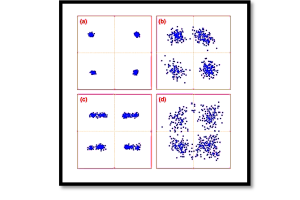
FM vs PM: A Comparative Study and Techniques of PM Demodulation
Modulation techniques such as Frequency Modulation (FM) and Phase Modulation (PM) are essential for modern communication. While both belong to the angle modulation family, their fundamental mechanisms and applications differ. This blog provides a detailed comparison of FM and PM and explores the techniques involved in demodulating PM signals.
FM vs PM: Key Comparisons
FM and PM are closely related, as both involve altering the carrier wave’s angle to transmit information. However, their distinctions are rooted in the parameter they modulate:
- Modulation Parameter:
- FM: Modulates the frequency of the carrier wave based on the amplitude of the message signal.
- PM: Modulates the phase of the carrier wave proportional to the instantaneous value of the message signal.
Mathematical Equations:

2. Frequency Response:
- FM’s instantaneous frequency varies directly with the modulating signal.
- PM’s instantaneous frequency depends on the derivative of the modulating signal:


Reference: Introduction to Spread-Spectrum Communications, by Roger L. Peterson, Rodger E. Ziemer, and David E. Borth, Appendix A, pp. 615–619, 1995, Prentice Hall, Inc.
4. Applications:
- FM is widely used in analog audio broadcasting, such as FM radio.
- PM is more prominent in digital communication protocols and navigation systems.
PM Demodulation: Methods and Principles
Demodulation is the process of recovering the original message signal from the modulated carrier wave. For Phase Modulation, this involves detecting changes in the phase of the carrier wave. Two prominent methods are used:
- Differentiator Method: PM can be converted to FM by differentiating the phase-modulated signal. This FM signal can then be processed by an FM detector to recover the message. The block diagram of this process is:
- PM Signal → Differentiator → FM Detector → Message Signal
How It Works: The differentiator converts the phase deviation into a frequency deviation, which is directly proportional to the original message signal. FM demodulation techniques, such as using a PLL (Phase-Locked Loop), then recover the modulating signal.
2. Direct Detection: Direct PM demodulation relies on extracting the phase deviation without converting it to FM. This is often achieved using a PLL that tracks the phase of the incoming signal and compares it with a reference phase.
- PM Wave → Phase Detector → Low-Pass Filter → Message Signal
Applications of PM Demodulation
PM demodulation is critical in systems where the phase of the signal encodes vital information. Common applications include:
- Digital Communication: Protocols like Phase Shift Keying (PSK) rely on precise phase demodulation.
- Satellite Telemetry: PM demodulation ensures accurate data recovery over long distances.
- Navigation Systems: GPS signals use PM to encode satellite position and timing data.
Take our entry level course (Below) for free using coupon code RAHRF101BLOG
RF Fundamentals, Basic Concepts and Components – RAHRF101
For limited time take an additional 10% off of all our courses using coupon code RFCERT10
Rahsoft RF Certificate and courses
Conclusion
FM and PM represent two sides of the angle modulation spectrum, with unique advantages tailored to specific applications. While FM dominates audio broadcasting, PM shines in digital communication and navigation systems. The ability to effectively demodulate PM signals is crucial for modern communication, ensuring accurate and reliable data recovery in diverse environments.

Learn more about this topic by taking the complete course ‘Introduction to Modulation in Communication Systems Online Course – RAHRF152’. Watch the course videos for more detailed understanding. Also checkout other courses on RF system and IC design on https://rahsoft.com/courses/. Rahsoft also provides a certificate on Radio Frequency. All the courses offer step by step approach.



